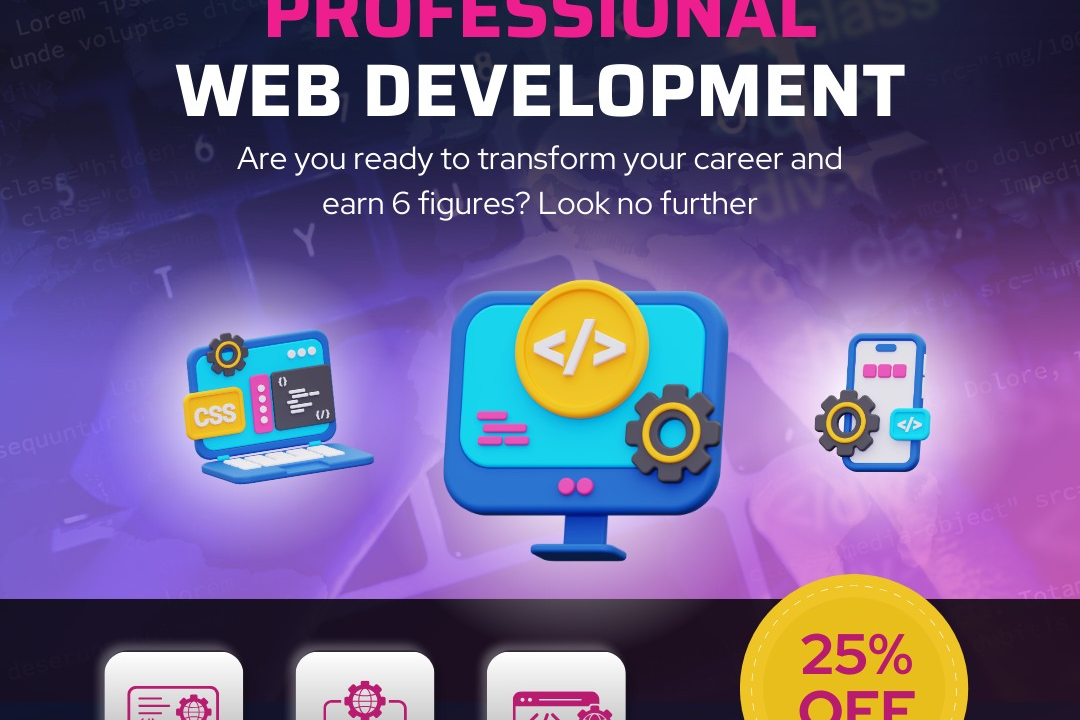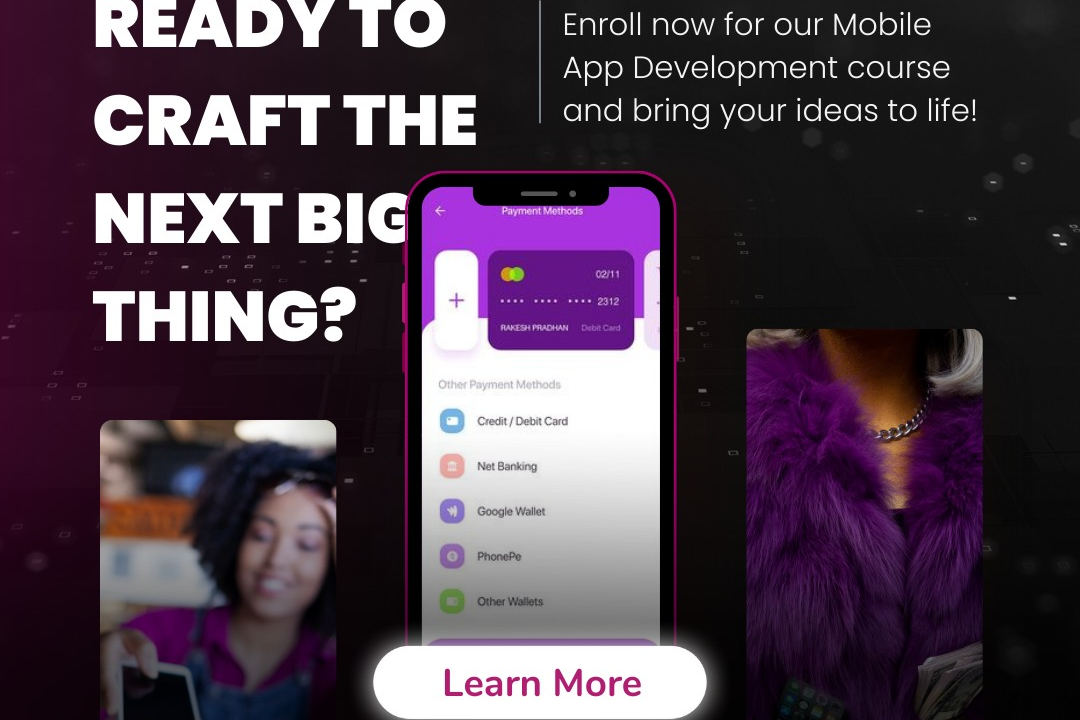How to Call Python Program from PHP
Calling a Python program from PHP involves executing the Python script through PHP's command-line in
How to Call Python Program from PHP
Calling a Python program from PHP is useful for integrating Python’s powerful capabilities—like data processing, machine learning, or automation—into PHP-based applications. This approach allows developers to leverage Python’s extensive libraries and functionalities while maintaining the core of their web applications in PHP. By executing Python scripts via PHP’s command-line functions, such as `exec()` or `shell_exec()`, you can pass data back and forth, enabling seamless interaction between the two languages. This method enhances the flexibility and performance of web applications, especially when complex computations or third-party Python tools are required.
To Download Our Brochure: https://www.justacademy.co/download-brochure-for-free
Message us for more information: +91 9987184296
Calling a Python program from PHP is useful for integrating Python’s powerful capabilities—like data processing, machine learning, or automation—into PHP based applications. This approach allows developers to leverage Python’s extensive libraries and functionalities while maintaining the core of their web applications in PHP. By executing Python scripts via PHP’s command line functions, such as `exec()` or `shell_exec()`, you can pass data back and forth, enabling seamless interaction between the two languages. This method enhances the flexibility and performance of web applications, especially when complex computations or third party Python tools are required.
Course Overview
Learn how to seamlessly integrate Python scripts into PHP applications by executing Python programs from PHP, enabling enhanced functionality and leveraging Python's capabilities within your web projects.
Course Description
This course teaches you how to execute Python scripts from PHP, enabling seamless integration of Python's capabilities into your PHP applications for enhanced functionality and automation.
Key Features
1 - Comprehensive Tool Coverage: Provides hands-on training with a range of industry-standard testing tools, including Selenium, JIRA, LoadRunner, and TestRail.
2) Practical Exercises: Features real-world exercises and case studies to apply tools in various testing scenarios.
3) Interactive Learning: Includes interactive sessions with industry experts for personalized feedback and guidance.
4) Detailed Tutorials: Offers extensive tutorials and documentation on tool functionalities and best practices.
5) Advanced Techniques: Covers both fundamental and advanced techniques for using testing tools effectively.
6) Data Visualization: Integrates tools for visualizing test metrics and results, enhancing data interpretation and decision-making.
7) Tool Integration: Teaches how to integrate testing tools into the software development lifecycle for streamlined workflows.
8) Project-Based Learning: Focuses on project-based learning to build practical skills and create a portfolio of completed tasks.
9) Career Support: Provides resources and support for applying learned skills to real-world job scenarios, including resume building and interview preparation.
10) Up-to-Date Content: Ensures that course materials reflect the latest industry standards and tool updates.
Benefits of taking our course
Functional Tools
1 - PHP Command Line Interface (CLI): PHP CLI allows developers to run PHP scripts directly from the command line, which is essential for executing Python programs via shell commands. Students learn how to invoke Python scripts using PHP's built in functions like exec(), shell_exec(), and system(), enabling seamless integration. Mastery of PHP CLI commands helps in automating processes, managing backend tasks, and troubleshooting script executions effectively. Practical understanding of CLI interactions ensures students can develop robust applications that leverage both PHP and Python efficiently. This tool forms the basis for integrating external scripts into PHP workflows, making it a foundational skill in cross language programming.
2) Python Scripts and Modules: The core of this course involves writing and organizing Python scripts or modules that perform specific tasks. Students get hands on experience creating clean, modular Python code to handle data processing, computations, or machine learning models. They learn how Python scripts can be prepared to accept inputs and return outputs that PHP can interpret. Understanding Python modules ensures reusability and maintainability of code, which is critical for scalable applications. Students also explore how to execute these scripts from PHP and interpret their responses, fostering a comprehensive understanding of inter language communication.
3) PHP Functions for Process Execution: Functions such as exec(), shell_exec(), system(), and proc_open() are crucial tools learned in this course. These functions enable PHP to initiate and control external processes, specifically Python programs, from within PHP scripts. Students practice configuring command strings, handling process outputs, and managing errors or exceptions during execution. Deep knowledge of these functions allows developers to invoke Python scripts asynchronously or synchronously, depending on application needs, ensuring robust communication. This skill is vital for integrating complex functionalities written in Python into PHP based web or desktop applications.
4) RESTful APIs and Web Services: To facilitate more scalable and flexible integration, students explore how to set up Python based REST APIs using frameworks like Flask or Django. These APIs serve as intermediaries, allowing PHP applications to communicate over HTTP with Python services. Training covers how to send HTTP requests from PHP using cURL or file_get_contents() and handle JSON or XML data exchanged between systems. Such approaches promote decoupled architecture, improve maintainability, and enable distributed system design. Learning API integration prepares students for modern, cloud compatible application development.
5) Message Brokers and Queuing Systems: Advanced training includes tools like RabbitMQ or Apache Kafka to establish asynchronous communication between PHP and Python components. Students learn how to send and receive messages through queues, enabling decoupled processing and load balancing. These message brokers handle high throughput data transfer, fault tolerance, and real time processing, which are essential for enterprise level applications. Understanding how to set up and use message queues equips students with skills to build robust, scalable architectures that leverage both PHP and Python efficiently under heavy loads.
6) Integrated Development Environments (IDEs): IDEs such as Visual Studio Code, PyCharm, or PHPStorm are integral for writing, debugging, and testing scripts in both languages. Students are trained to set up environments that support multi language coding with features like syntax highlighting, code completion, and version control integration. Proper IDE configuration helps in monitoring script execution, troubleshooting errors, and managing code repositories effectively. These tools enhance productivity, foster best coding practices, and streamline the development process when working with cross language projects.
7) Version Control Systems (VCS): Tools like Git are crucial for tracking changes, collaborating, and managing codebase history in multi language projects. Students learn best practices for creating repositories, branching, committing, and resolving conflicts in PHP and Python code. Effective use of VCS ensures code integrity, facilitates teamwork, and simplifies deployment workflows. Emphasizing version control prepares students for real world software development environments, ensuring that integrating Python with PHP is seamless, organized, and maintainable over time.
8) Containers and Virtualization Tools: Docker and VirtualBox are instrumental for creating isolated environments to run PHP and Python applications without dependency conflicts. Students are trained to containerize their applications, enabling consistent deployment across different platforms. They learn to write Dockerfiles, manage container orchestration, and deploy applications in scalable environments, ensuring reproducibility. Mastering these tools allows students to develop portable, efficient, and secure integration solutions suitable for cloud or on premises deployment scenarios.
9) Debugging and Testing Tools: Tools like Xdebug for PHP and pytest for Python help students validate their scripts and scripts integration. They learn techniques to write unit tests, perform debugging, and simulate various execution scenarios. Such practices ensure the reliability and robustness of calling Python programs from PHP, helping identify issues early in the development cycle. Incorporating testing frameworks instills rigorous development standards, which are vital for building high quality, dependable applications.
10) Data Serialization Libraries: JSON and XML libraries in both PHP and Python are essential for encoding and decoding data during communication. Students explore how to serialize complex data structures into formats suitable for transmission over APIs or message queues and then deserialize them back into usable objects. This knowledge enables smooth data exchange, ensuring compatibility between PHP and Python components. Effective use of serialization tools is fundamental for creating interoperable, efficient, and secure integrations in multi language projects.
11 - Secure Communication Protocols: Implementing HTTPS, SSL/TLS encryption, and authentication mechanisms like OAuth or API keys ensures secure data exchange between PHP and Python components. Students learn best practices for safeguarding sensitive information during inter process communication, preventing malicious attacks, and maintaining data integrity. Incorporating security protocols is essential for compliance and user trust, especially when handling personal or financial data in integrated applications.
12) Logging and Monitoring Solutions: The course covers setting up logging frameworks such as Log4PHP for PHP and logging modules for Python to track application activity, errors, and performance metrics. Students learn how to implement centralized logging, set alerts, and monitor system health in real time. Proper logging and monitoring are critical to quickly diagnose issues, optimize performance, and ensure smooth operation of integrated systems.
13) Cross Platform Compatibility: Emphasis is placed on ensuring that PHP and Python scripts work seamlessly across various operating systems like Windows, Linux, and macOS. Students explore environment specific configurations, path handling, and dependency management to build portable solutions. Mastering cross platform compatibility broadens deployment options and simplifies maintenance in diverse infrastructure environments.
14) Automated Deployment and CI/CD: Students are introduced to continuous integration and continuous deployment tools like Jenkins, GitHub Actions, or GitLab CI. They learn how to automate testing, building, and deploying PHP and Python applications, reducing manual effort and minimizing errors. Automation streamlines the release pipeline, accelerates development cycles, and ensures consistent environments for integrated projects.
15) Data Handling and Database Integration: The course includes integrating PHP and Python with databases such as MySQL, PostgreSQL, or MongoDB. Students learn to perform CRUD operations, manage database connections, and transfer data efficiently between systems. Effective data handling supports applications that require real time updates, analytics, or complex data processing across both languages.
16) Caching Strategies and Optimization: Techniques like Redis or Memcached are covered to improve application performance. Students explore caching results from Python scripts invoked through PHP, reducing redundant computations and speeding up response times. Optimizing inter language calls enhances scalability and user experience, especially under heavy load conditions.
17) Asynchronous Processing and Multithreading: The course introduces asynchronous programming models and multithreading in Python and PHP. Students learn how to set up background jobs, manage concurrent processes, and handle asynchronous results. These skills are vital for building responsive applications capable of handling multiple tasks simultaneously, such as processing large datasets or real time data streams.
18) Custom API Development with JSON Web Tokens (JWT): Students learn to create secure, token based authentication for APIs that connect PHP frontends with Python backends. Implementing JWT ensures that only authorized systems can access critical services, adding a layer of security to integrated workflows.
19) Cloud Based Deployment: The course covers deploying PHP and Python applications on cloud services like AWS, Azure, or Google Cloud. Students explore setting up virtual machines, container orchestration with Kubernetes, and serverless solutions. Cloud deployment ensures scalability, high availability, and flexibility for enterprise grade integrations.
20) User Interface (UI) Integration: For applications with web frontends, students learn to embed PHP and Python functionalities within user interfaces. Techniques include AJAX calls, dynamic content loading, and real time updates via WebSockets. Enhancing GUI interactions with cross language capabilities improves user engagement and application interactivity.
21 - Licensing, Open Source, and Compliance: The course emphasizes understanding licensing considerations, open source compliance, and legal aspects when integrating external Python modules or PHP libraries. Knowledge of licensing ensures lawful use and distribution of code, preventing legal issues and fostering ethical development practices.
22) Documentation and Knowledge Sharing: Students are trained to document their inter language integration processes thoroughly. Using tools like Swagger for APIs or Markdown documentation fosters knowledge sharing, simplifies onboarding, and supports maintenance of complex systems involving PHP and Python components.
23) Scalability and Load Testing: Techniques for testing how well integrated applications perform under increasing user loads are covered. Tools like Apache JMeter or Locust facilitate simulating traffic and spotting bottlenecks. This prepares students to design scalable architectures that maintain performance levels as user demand grows.
24) Hands On Capstone Projects: The course culminates in comprehensive projects that require designing and implementing end to end solutions integrating PHP and Python. Real world scenarios reinforce learning, demonstrate practical skills, and prepare students for professional challenges in multi language development environments.
25) Community Engagement and Support: Students learn how to participate in open source communities, forums, and developer groups related to PHP and Python. Building connections and seeking support ensure continuous learning, staying updated with best practices, and contributing to collaborative development efforts.
Mastering these additional aspects empowers students to build sophisticated, secure, and scalable applications that leverage the strengths of both PHP and Python, making them valuable assets in today's diverse technology landscape.
Browse our course links : https://www.justacademy.co/all-courses
To Join our FREE DEMO Session:
This information is sourced from JustAcademy
Contact Info:
Roshan Chaturvedi
Message us on Whatsapp: +91 9987184296
Email id: info@justacademy.co
Android App Developement Full Course In Hindi












